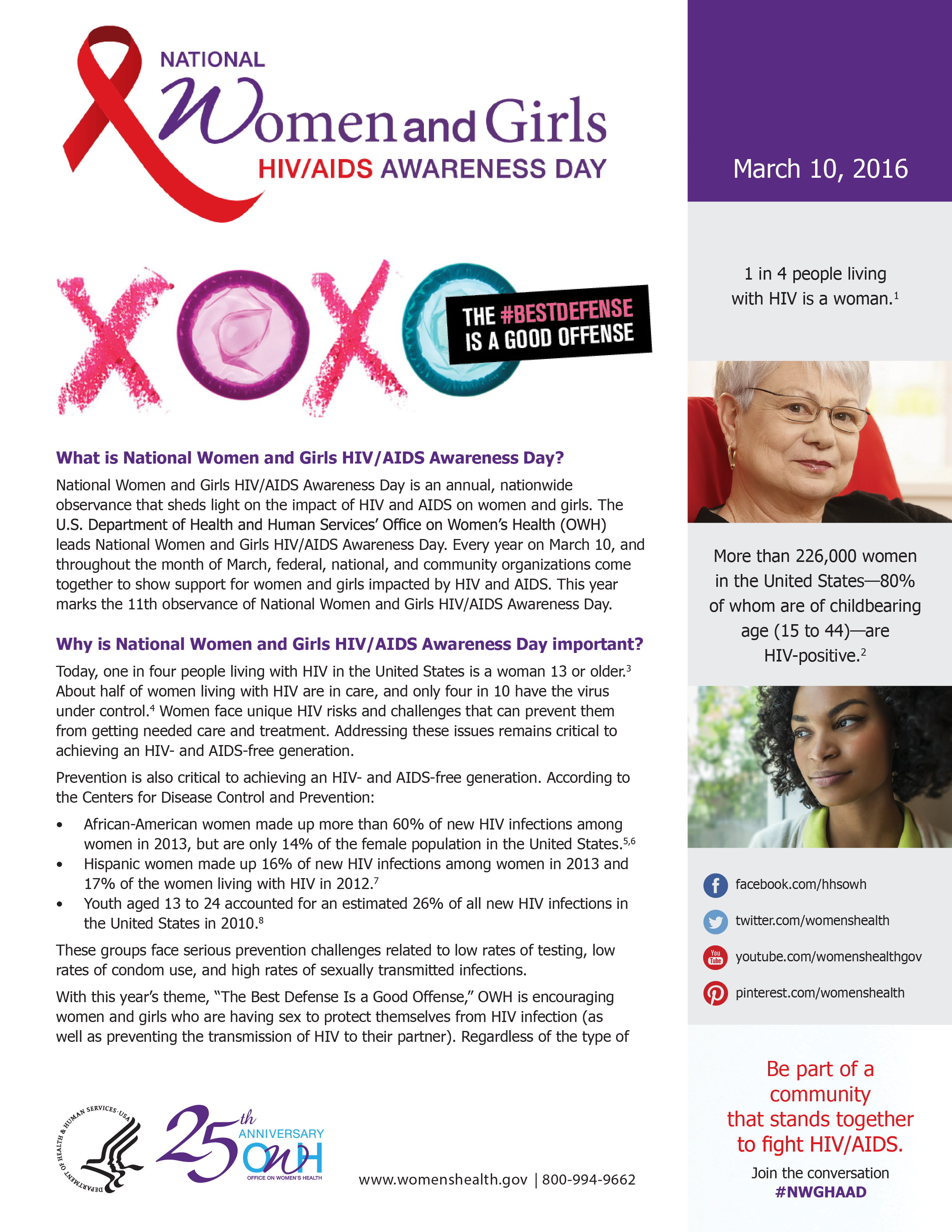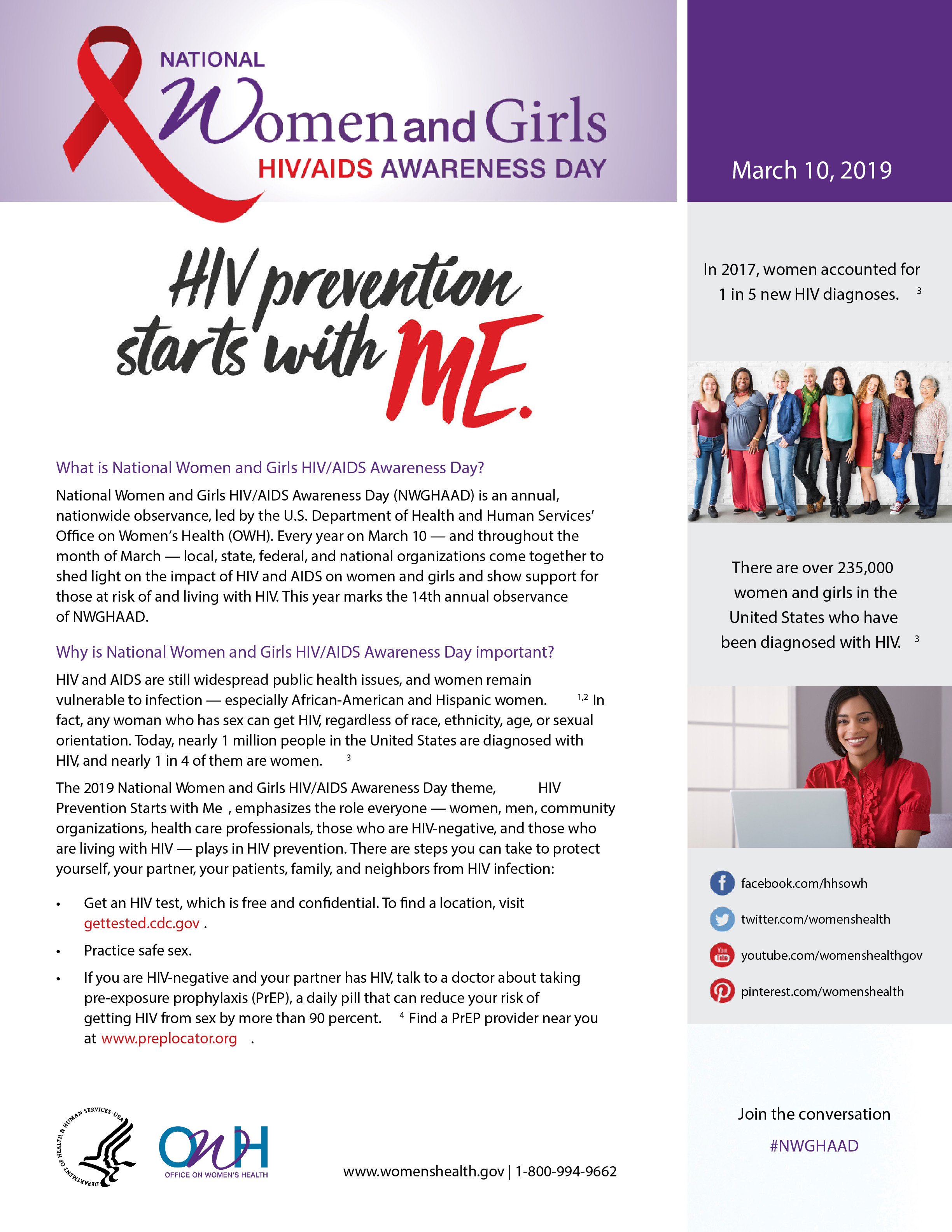The Department of Health and Human Services stripped from a government website HIV/AIDS educational material that featured condoms, calling the images “unapproved,” according to official correspondence obtained by Kaiser Health News.
The images had been included in a 2017 fact sheet posted by HHS’ Office on Women’s Health to mark National Women and Girls HIV/AIDS Awareness Day. A directive to remove it from HHS servers was contained in an Aug. 1, 2017, email from a junior department employee to Palladian Partners, a federal contractor that specializes in communications about health and science education.
The condoms were featured on a fact sheet and included in a social media campaign on Facebook intended to spread messages on how to reduce HIV transmission among women and girls. “Since it contains the unapproved condom imagery, we were hoping you could remove this file from the server,” the government official wrote. The document — which wasn’t publicly linked on the agency’s WomensHealth.gov website at the time ― was removed from the government’s server that morning.
Kaiser Health News was provided the HHS emails by American Oversight, a left-leaning, nonprofit government watchdog group that obtained them in response to a Freedom of Information Act request.
The HHS agency’s website lists abstinence as its first form of prevention, saying, “The best way to prevent HIV is to not have vaginal, oral, or anal sex or share needles at any time.” It then mentions condoms.
For those who are sexually active, condoms are widely recognized as the most effective method for preventing HIV and other diseases, if used correctly. Experts also say condom use should be promoted as part of a broader prevention strategy along with safe-sex behaviors, increased testing and medication such as pre-exposure prophylaxis ― commonly known as PrEP.
“To me, it should be PrEP, it should be condoms, it should be contraception. To me, that’s more realistic for women,” said Vincent Guilamo-Ramos, a New York University professor who specializes in HIV/AIDS prevention. “It should be together.”
Palladian Partners is a communications firm owned by Altarum, which says it is in the business of helping “federal and state agencies and other organizations improve health outcomes.” Palladian worked with HHS’ women’s health office as part of a larger contract with Hager Sharp, another communications company.
“All people deserve accessible information about health and science,” reads a blurb from Amy Ewing, vice president of Palladian Partners, in explaining Palladian’s mission on its website. “Using social marketing and plain language, we connect audiences to the messages they need to live better, healthier lives.”
Palladian’s contract to provide communications support to the women’s health office ended in June. While the firm would make recommendations about content, HHS made final decisions about materials on its website. The firm did not make a recommendation about the removal of condom imagery, according to its president, Beth Maloney.
In 2017, women accounted for 1 in 5 new HIV diagnoses, according to HHS. More than 236,000 adult and adolescent women were living with a diagnosed HIV infection in the U.S. at the end of 2017, according to a report from the Centers for Disease Control and Prevention.

(Source: HHS emails provided by American Oversight)
An HHS spokesperson declined to comment on whether the decision to take down fact sheets with the condom images — which appeared in the department’s 2016 materials as well ― was part of a broader department policy to not include condom images in HIV/AIDS educational materials. HHS still mentions condoms as a prevention tool on some websites and fact sheets.
“HHS routinely reviews and updates online content, which may include revision or removal of content that is no longer current, underutilized or available elsewhere,” the spokesperson said, adding that the 2017 fact sheet was removed “as part of routine maintenance” and no approval “seems to have occurred” for the 2016 and 2017 images.
HHS in recent years has been criticized for removing information and health resources from government websites, including content related to LGBT health that previously appeared on WomensHealth.gov.
HHS’ Office of the Assistant Secretary for Health, which oversees the women’s health office, was led by Dr. Don Wright when the emails about unapproved condom images were sent. Wright, who had been the division’s acting head, is a career civil servant and has worked for administrations of both Democratic and Republican presidents.
He was succeeded in February 2018 by Dr. Brett Giroir, a political appointee nominated by President Donald Trump.
The Office on Women’s Health periodically changes its educational messages related to HIV prevention for women and girls; in 2016 and 2017, the theme was “The Best Defense Is a Good Offense.” Associated promotional logos designed for social media and documents displayed multicolored images of individual condoms.

(Source: HHS emails provided by American Oversight)
For 2018 and 2019, the message had changed to “HIV Prevention Starts With Me.” Government-issued promotional materials emphasized HIV testing and taking prevention medication, in particular PrEP. The fact sheets did not mention condoms.
HHS has made boosting access to PrEP a major part of Trump’s goal to halt new transmissions of HIV in the United States by 2030, an initiative he announced during his 2019 State of the Union address.
“We’ve secured a donation of prevention medication for 200,000 uninsured Americans. We’ve made planning grants to the 57 jurisdictions that account for half of the new infections in America. And we’ve already started implementation in four jurisdictions,” HHS Secretary Alex Azar said in a speech to department employees in early February. “That is an incredible set of results in one year.”
The most recent HHS materials included more information about taking medication to reduce risk, but less detail on other aspects of prevention ― notably on what constitutes safe-sex practices. For example, fliers from 2018 and 2019 encouraged women and girls to “practice safe sex” but did not elaborate. HHS declined to comment on this change.
“I think for any demographic it’s too vague. What does that mean? Everyone has a different threshold,” said Kim Molnar with The AIDS Institute, a patient advocacy organization.
An earlier version of the flier, from 2016, went into greater detail about behaviors that are protective against HIV infection, for women and girls as well as their partners ― including using condoms every time they have sex, not abusing drugs or alcohol and engaging in sexual activity with a monogamous partner. However, Guilamo-Ramos said the 2016 documents could have benefited from more context about certain populations at higher risk for HIV infection.
The federal government sponsors HIV/AIDS awareness days every year for different groups, including young people, gay men, African Americans and Latinos. The one for women and girls is held every year on March 10. This year, HHS said, it will stick with the theme of the past two years.
This story was produced by Kaiser Health News, an editorially independent program of the Kaiser Family Foundation.


